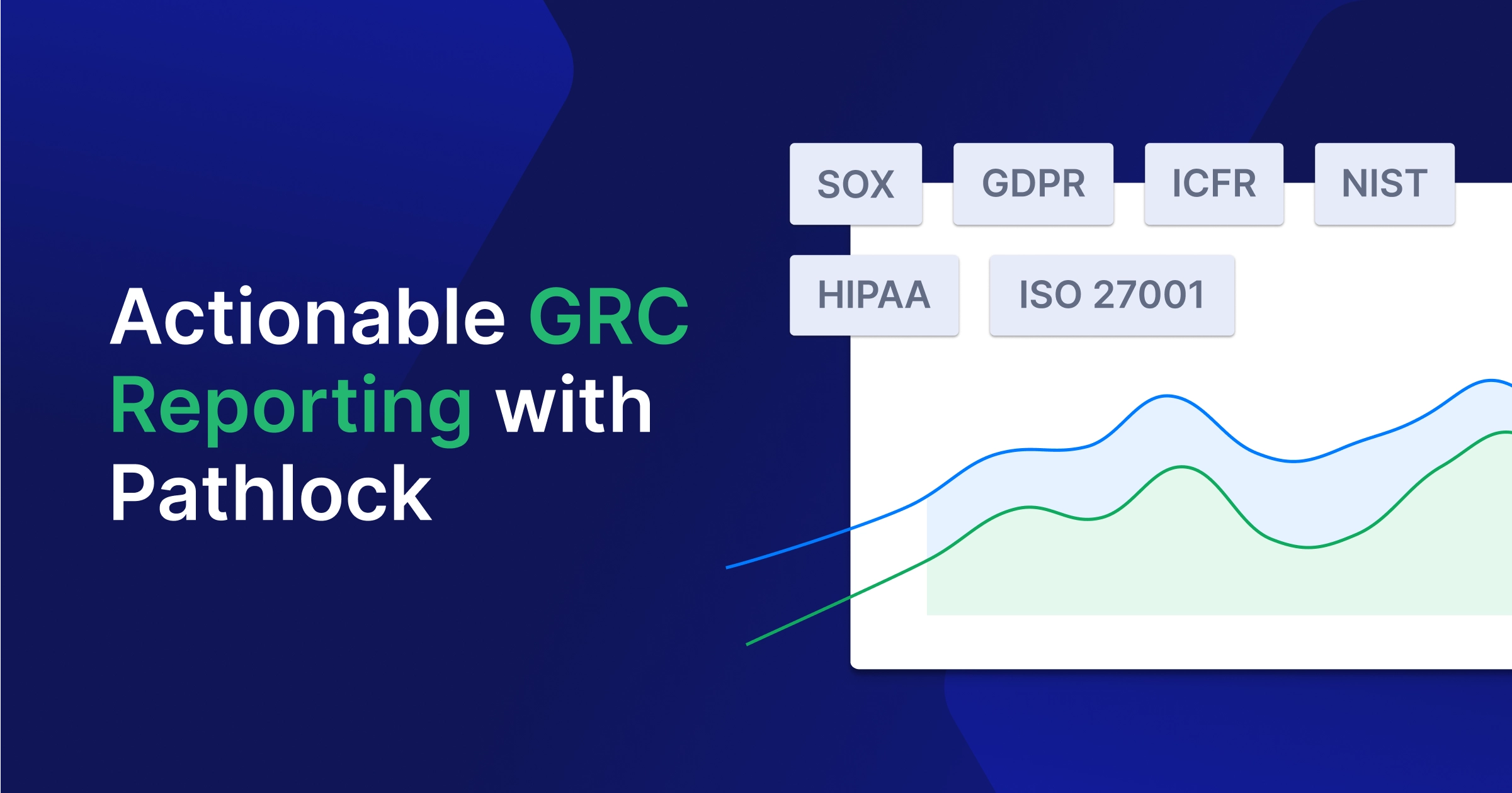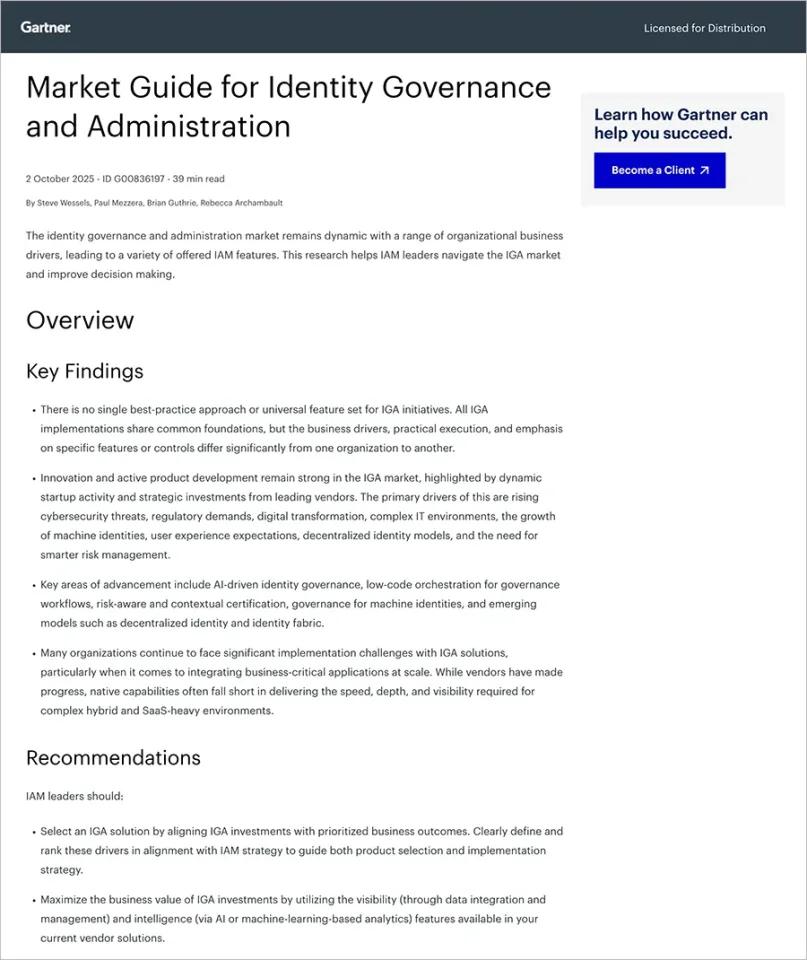Introduction to Risk Mitigation
In early 2020, a virus brought global supply chains to a standstill, sent markets into freefall, and forced entire industries to reinvent themselves virtually overnight. COVID-19 did not just expose vulnerabilities in how businesses operate; it also exposed how ‘prepared’ organizations were for an unforeseen risk. The pandemic taught an expensive lesson: discussing risk is not the same as being ready for it.
Today, every business lives with risk. Macroeconomic volatility, energy crisis, cybersecurity threats, and regulatory changes are part of routine conversation in most organizations, yet they still fail to translate that awareness into practical action and preparedness. Sometimes, even the most prepared companies face uncertainty that challenges their resilience. Frankly, risk is not something you can avoid, but something you must manage smartly.
Risk mitigation is an organized process for identifying, assessing, and controlling potential threats before they can sabotage business operations. It is not about reacting when things go wrong, but about foreseeing potential problems before they erupt. It is about building safeguards that minimize the impact of uncertainty on an organization’s daily operations, financial performance, and long-term goals. Risk mitigation translates unpredictability into a manageable factor; something that can be planned, measured, and controlled.
This article aims to demystify the fundamentals of risk mitigation and provide practical insights that businesses can apply to curb risk.
The Basics of Risk Mitigation Planning
Every organization, regardless of its industry or scale, needs to understand the risks it faces. It must:
- Identify potential threats, evaluate their probability of occurrence, and estimate their impact on operations, finances, and reputation.
- Develop risk mitigation plans that align with the organization’s specific context (goals, resources, tolerance for uncertainty, etc.).
Yet risk management does not end with creating a plan. Risk is dynamic and evolves with factors such as new technologies, higher-than-anticipated costs, market fluctuations, and natural disasters. Organizations should regularly review their current processes and controls to identify what is working and where the gaps exist. They should then update their mitigation plans to address the gaps.
A strong risk management program is built on clear structure and accountability, where:
- Every stakeholder should understand their specific roles and responsibilities in identifying, reporting, and addressing risks.
- There should be adequate focus on cybersecurity measures to safeguard critical data and systems,
- Regulatory compliance is central to avoiding costly penalties and maintaining credibility.
Types of Business Risks
Here are some of the most common risks businesses face, regardless of size, region, industry, or maturity.
| Risk Type | Description |
|---|---|
| Compliance Risk | Compliance risk arises when a company fails to adhere to internal policies, industry standards, or external regulations, such as data privacy, environmental, or labor laws. This can result in financial penalties, legal action, and reputational harm. |
| Legal Risk | Legal risk involves exposure to lawsuits, fines, and sanctions due to violations of government laws or contractual obligations to third parties or vendors. Breaking them can lead to financial losses and reputational damage. |
| Operational Risk | Operational risk stems from failures or weaknesses in everyday business processes. This includes internal or external fraud, system breakdowns, process inefficiencies, and human error. Such risks can disrupt operations, lower productivity, and increase costs. |
| Strategic Risks | Strategic risk arises from high-level business decisions that shape the company’s direction. Such decisions usually revolve around the organization’s response to market competition, technological changes, and shifts in the economic and regulatory landscape. Poor strategic choices can lead to lost market share and missed growth opportunities. |
| Financial Risks | Financial risk encompasses the potential for monetary loss or failure to achieve desired economic milestones. It can take several forms, such as market risk, credit risk, liquidity risk, operational risk, and legal exposure, which can jeopardize a company’s long-term stability. |
| Reputational Risks | Reputational risk refers to the harm caused by negative publicity, product failures, ethical lapses, or legal disputes. It can impact an organization in several ways, including lost customers, declining investor confidence, and reduced market value. |
| Natural Disasters | Natural disasters, such as earthquakes, floods, and pandemics, can also disrupt business operations, causing delays, data loss, and organizations may face lengthy downtime and struggle to recover. |
Four Types of Risk Mitigation Strategies
There are four strategies an organization can adopt to address risk. Understanding them can help leaders choose the correct response for each situation, whether that means reducing, transferring, avoiding, or accepting the risk.
Risk Reduction (Mitigation Control)
Risk reduction is about being proactive rather than reactive. It focuses on reducing the likelihood of a threat and minimizing its impact if it does occur. Organizations can adopt these risk mitigation techniques to anticipate and control risks before they escalate:
- Implement safety measures to prevent accidents, protect employees, and create a safe operational environment.
- Conduct regular reviews to identify potential issues and address them early.
- Set up backup systems to keep operations running smoothly during unexpected disruptions.
- Provide training to employees to reduce human error and educate them to respond effectively to potential risks.
- Implement cybersecurity measures to protect critical data, networks, and digital assets from malicious threats.
Risk Transfer
In some cases, the best way to handle a risk is to shift its burden to another party. This is known as risk transfer. Companies can do this through:
- Insurance policies, such as purchasing an insurance policy to cover property damage
- Contractual agreements, such as service-level agreements (SLAs) with cloud service providers or vendors
In this way, organizations can reduce financial and regulatory exposure while ensuring that responsibility for specific incidents is clearly defined and acceptable to all parties. Though it does not eliminate the risk, it cushions the impact in case things go wrong.
Risk Avoidance
Sometimes, it is best to avoid or eliminate the risk. Organizations can do this by deliberately choosing not to engage in activities that could expose the business to high risk. Risk mitigation examples are:
- Declining to operate in unstable or high-risk regions
- Canceling projects with a high chance of failure
- Discontinuing a product due to safety concerns
Although this approach seems conservative, it can prevent losses by avoiding situations where the potential downside outweighs the gains.
Risk Acceptance
Risk acceptance is about acknowledging that some risks are either too minor or too costly to mitigate, or that the possible reward outweighs the risk. In these cases, an organization decides to live with the risk and takes no steps to reduce it (at least temporarily) while diverting resources towards higher-priority threats. For example, a company delays a project in exchange for achieving better product quality or enhanced functionality. This is a conscious decision with a clear understanding of potential consequences, yet it is important to have a contingency plan in case the risk materializes.
How to Identify and Assess Risks
To devise an effective risk management strategy, the first step is to identify and assess the risks relevant to your organization across financial, operational, and strategic areas. Without a clear understanding of what could go wrong, it is impossible to create mitigation plans. So, this step serves as the foundation for all subsequent risk-related efforts. It provides the insight needed to prioritize threats and allocate resources wisely.
Consider the following when identifying and assessing risks.
- Role of Project Managers: Project managers play a key role in spotting, prioritizing, and managing risks that are specific to their projects. They must consider factors such as timelines, budgets, and resource availability to ensure projects stay on track even when unforeseen challenges arise.
- Ongoing Risk Monitoring: Organizations should actively track and evaluate risks, since threats can change quickly in response to factors like new technologies, market movements, and internal change. Consistent monitoring, re-assessment, and proactive risk identification are some best practices that keep mitigation strategies updated, relevant, and effective over time.
- Financial Risk Considerations: Risks have the most immediate and visible impact on financial stability. When assessing financial exposure, organizations must consider factors such as market volatility, economic downturns, and changes in customer demand. Companies can adopt measures such as diversifying revenue streams, building cash reserves, and implementing cost-control initiatives to remain resilient.
Overall, organizations should take a holistic approach to risk management. This means they should consider all potential risks (strategic, operational, financial, and technological) and understand how they interact with or compound one another. This bigger picture can guide them to develop targeted mitigation strategies that address the most critical threats.
Steps to a Successful Risk Mitigation Strategy
A risk mitigation plan is not something an organization can copy from another organization and implement as is. Every business operates under different conditions, with its own vulnerabilities and priorities, so there is no universal mitigation plan. Logically, your mitigation plan should fit your company’s unique structure and goals. Make sure you have a capable risk management team that can assess threats from different perspectives, design practical responses, accurately weigh the potential impact of each risk, and prioritize risks by severity.
Here are some guiding principles for a strong and sustainable risk management approach.
Step 1: Identify
The first step is to identify potential risks. Every business has its own vulnerabilities, so you should look for risks specific to your industry, location, and business operations. Use techniques such as SWOT analysis to uncover the risks. Document each risk in detail and continue to append this documentation throughout the risk mitigation process. Involve a stakeholder from all aspects of business, from finance and operations to IT and compliance. Gathering diverse perspectives and voices from all departments is a great way to capture a complete picture of vulnerabilities.
Step 2: Perform a Risk Assessment
Next, assess each risk using two parameters: its likelihood of occurring and its potential impact on your business. Use quantitative and qualitative methods to evaluate risks, such as risk matrices, scenario analysis, and expert judgment. For instance, quantify the severity of each risk and compare the matrices across all risks. This comparative analysis of both the likelihood of occurrence and the potential harm can guide decisions about which risks require immediate attention and which can be monitored over time. Do not forget to determine and document the events or conditions that trigger a risk.
Step 3: Prioritize
Not all risks are equal, so you must rank and prioritize them based on their assessed severity and the level of threat they pose to the company’s objectives, operations, and stakeholders (as discussed in the previous step). Sometimes, this means accepting a manageable level of risk in one area to protect a more critical aspect of operations. You should establish an acceptable risk threshold as a starting point for decision-making and resource allocation. In this way, organizations can direct time, money, and attention to the risks that matter most.
Step 4: Devise a Risk Mitigation Plan
Equipped with all the necessary numbers and insight, design and document your risk management and mitigation plan in detail. Pay attention to all possible risks and scenarios. Define a targeted strategy that outlines specific actions and measures to reduce or control each risk and assign responsibilities to the right people. This phase must also involve stakeholders across the organization to ensure the plan is comprehensive and tailored to the organization’s business needs.
Step 5: Implement
Execute your risk management plan. For each risk, implement necessary checks, controls, and monitoring mechanisms. This may involve deploying new technologies, updating internal processes, and defining accountability across teams. Sound implementation lays the foundation for effective monitoring and continuous improvement. Communication and employee training have a crucial role to play in this phase:
- Open communication promotes a culture where both individual contribution and shared responsibility co-exist. Everyone in the organization, from executives to front-line employees, should understand the risks and their individual role in managing them. Departments should collaborate to address overlapping risks holistically.
- Conduct regular training exercises for employees on risk management theories and practices, so that they can recognize warning signs early and respond appropriately when issues arise. These exercises should also reinforce best practices to help teams implement them in routine operations.
Step 6: Monitor
Risk management is an ongoing process. Organizations should initiate regular reviews to determine whether mitigation measures are working as intended. This process is instrumental in pinpointing inefficient controls, spotting new risks, adjusting risk priorities, and identifying areas of improvement. It is best to use performance metrics and statistical tools for accuracy and reliability in tracking mitigation outcomes.
Step 7: Report
The final step involves reviewing outcomes, reporting progress, and re-evaluating strategies for improvement. Share findings from the monitoring phase with stakeholders and leadership to assess whether the mitigation strategy remains relevant and responsive to new developments. Remember that risk is a living entity; therefore, a mitigation strategy should be periodically analyzed for timely adjustments and updates. It should adhere to the latest regulatory and compliance rules and stay relevant to your business. You must also develop contingency plans for sudden shifts or major incidents.
Step 8: Continuous Improvement
Continuous improvement is key to survival. Organizations should encourage employees to report potential risks, share lessons learned, and suggest better ways to handle challenges. They should also provide platforms, such as feedback channels or internal forums, where employees can openly discuss risks and propose improvements.
Real-Life Examples of Successful Risk Mitigation
Let’s look at two real-world examples of risk mitigation strategies from different industries. These illustrations prove that risk mitigation is not just a buzzword: it’s a superhero-like savior.
Risk Mitigation in Aviation (Southwest Airlines)
Southwest Airlines has been recognized for its disciplined approach to operational and financial risk management. During the early 2000s, particularly around 2005, Southwest Airlines adopted an aggressive fuel hedging strategy, locking in fuel prices well below market rates in advance. This risk mitigation strategy protected the company from volatile price spikes and allowed it to maintain stable operating costs even when other airlines faced financial strain. Overall, the company implements rigorous maintenance schedules and data-driven safety protocols to minimize operational disruptions and safety incidents, which attest to its strong reputation for risk management.
Risk Mitigation in Healthcare (Mayo Clinic)
The Mayo Clinic employs comprehensive risk management strategies to protect patients and ensure quality of care. The organization relies on electronic health records (EHR) to reduce documentation errors and has implemented rigorous infection control measures across its facilities. It conducts regular staff training focused on patient safety, ensuring everyone stays up to date on best practices. Moreover, the organization regularly reviews incident reports to identify weaknesses. This approach to risk management has earned Mayo Clinic its standing as one of the most trusted healthcare institutions in the country.
Risk Mitigation Tools
Organizations face a wide range of risks, including cyber threats, financial instability, and compliance challenges. Manual processes and spreadsheets cannot keep pace with this complexity or handle the volume of risk data. Organizations should adopt tools and technologies that deliver automation, visibility, and data-driven insights to enable more accurate, proactive risk management.
Key Risk Mitigation Tools and Software
| Tool/Software | Description |
|---|---|
| Risk Assessment Software | Risk assessment software enables organizations to identify, evaluate, and monitor potential risks. Using it, teams can document risks, assign severity levels, and develop mitigation plans while automating routine processes to save time and attain accuracy. Using dashboards and visual reports, they can track risk exposure over time. Then use this data to prioritize actions, allocate resources, and develop targeted mitigation strategies. Examples include Resolver, LogicGate, and RiskWatch. |
| Data Analytics | Data analytics is a game-changer for predicting and mitigating risks. By analyzing large datasets, organizations can uncover hidden patterns, trends, and correlations that can serve as early warning signs of potential issues and vulnerabilities, such as fraud, operational bottlenecks, and market volatility. Predictive analytics and AI-driven models further enhance accuracy, empowering leaders to make informed decisions for risk mitigation. |
| Communication and Collaboration Tools | Risk mitigation is a team sport. Platforms like Asana, Trello, Microsoft Teams, and other project management software keep teams connected and aligned. These platforms also streamline task assignments, progress tracking, and documentation. This lowers the chances of miscommunication or delays in addressing risks. |
| Incident Response Software | Incident response software is designed to effectively manage and respond to critical situations like data breaches, equipment failures, and compliance issues. It centralizes reporting, automates workflows, and guides teams through a coordinated response process. Speed matters. Quick containment and recovery minimize the impact of incidents. Examples include PagerDuty, ServiceNow, and IBM Resilient. |
| Specialized Platforms | Organizations can also use dedicated risk management platforms that integrate multiple functions, such as assessment, tracking, reporting, and collaboration, into a single solution. Platforms like RiskOversight offer advanced risk and compliance management capabilities, while tools like Confluence provide centralized documentation and knowledge sharing for risk-related policies, plans, and reports. These specialized tools nurture a more connected, transparent, and accountable risk culture. |
Risk Management Solutions from Pathlock
Pathlock offers a compliance-centric identity security platform that delivers “… fine-grained identity security and governance for business-critical applications to reduce risk, lower compliance costs, and ensure audit and IPO readiness.” Here is how Pathlock supports risk mitigation.
Access Risk Governance
The Application Access Governance application mitigates access-related risks. It can detect segregation-of-duties (SoD) conflicts, flag excessive permissions, and automate access reviews. By enforcing least privilege principles and tracking privileged sessions, the application can mitigate risks such as unauthorized access, insider threats, misuse of privileged access, and policy violations.
Continuous Controls Monitoring & Analytics
The Continuous Controls Monitoring application is about analytics and monitoring. It enables organizations to automate testing of financial and IT application controls and to monitor suspicious transactions. The platform also tracks system changes, user activities, and policy breaches in real time. This gives early visibility into anomalies and risk patterns. Teams can respond faster to curb risk and minimize financial loss, fraud, and process breakdowns.
Cybersecurity Application Controls & Data Protection
The Cybersecurity Application Controls application addresses the risks of data breaches, unauthorized code changes, and vulnerabilities in critical systems such as SAP. It validates system integrity through continuous vulnerability and code scanning, data masking, real-time threat detection, transport control, and comprehensive logging and alerts.
Audit Readiness, Compliance & Reporting
Non-compliance, failed audits, and regulatory penalties are major risks. By automating evidence collection and compliance reporting, Pathlock lowers these risks. It supports regulatory frameworks like SOX and GDPR.
Why is Mitigating Risk Important? (Benefits)
Strong risk mitigation practices enable organizations to anticipate, prepare for, and quickly recover from disruptions arising from economic shifts, cyberattacks, supply chain issues, and natural disasters.
With a proactive approach to identifying, managing, and mitigating risk, organizations can:
- Protect assets (such as financial resources, intellectual property, infrastructure, data)
- Ensure business continuity by keeping operations running in the face of disruption
- Comply with regulatory and industry standards consistently to avoid penalties and reputational damage
- Safeguard investments by minimizing financial losses tied to unexpected events
- Strengthen stakeholder confidence by proving to investors, clients, and partners that the company is responsible and well-governed
- Drive decision-making through better visibility into risks
- Gain a competitive edge by seizing opportunities that risk-averse competitors avoid
These outcomes of practical risk mitigation herald innovation, growth, stability, and long-term success.
Risk Mitigation Best Practices
Organizations should implement these best practices to enhance their risk mitigation efforts, making them more effective, sustainable, and aligned with business goals.
Keep Stakeholders in the Loop
You should keep all stakeholders informed on risk mitigation efforts. This fosters a shared understanding of responsibilities and expected outcomes, while also ensuring that everyone knows their individual role in managing and responding to risks. When diverse stakeholders bring varied perspectives and insights, it yields comprehensive mitigation strategies.
Integrate Risk Mitigation into Strategic Planning
Do not treat risk mitigation as a standalone process. Instead, embed it into daily decision-making. By factoring risk considerations into budgeting, project planning, and investment decisions, organizations can balance innovation with stability.
Utilize Risk Management Tools
Leverage risk management software, templates, and frameworks to streamline risk-related processes. These tools help identify, assess, prioritize, track, and report risks. They also centralize data, facilitate collaboration, and provide real-time visibility into threats and mitigation efforts. By automating manual tasks, teams can focus on strategic risk reduction rather than administrative work.
Assess Risks Regularly
Conduct periodic reviews of your risk management framework to assess what is working, identify gaps, and refine processes. Continuous improvement keeps your organization prepared for challenges.
Conduct Training and Awareness Programs
Educate employees on risk management principles and practices. Conduct regular training sessions, scenario-based drills, and awareness campaigns to help teams recognize potential threats early and respond effectively. Training also reduces the chance of human error and oversight.
Conclusion
Every risk you overlook today is creating tomorrow’s crisis. Organizations that survive do not have a crystal ball. They have systems that read the warning signs, while others are still squinting at the page.
So ask yourself: what story is your organization writing? Companies that thrive aren’t lucky. They’re prepared.
The question isn’t whether disruption will come; it’s whether you’ll be ready for it. It’s whether you’ll be prepared when it does.



